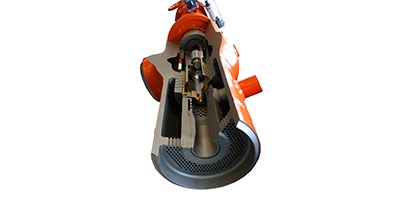Power stations and steam distribution systems depend upon robust and reliable flow control equipment for safe operation. Celeros Flow Technology offers the Direct Steam Converting Valve – Steam Atomization (DSCV-SA) from Copes-Vulcan.
Specifically designed for arduous applications such as steam turbine bypass systems, continuous steam letdown stations, and CHP plants, the Copes Vulcan DSCV-SA is particularly suited to the isolation of the steam flow in turbine bypass applications where valves remain closed for long periods.
The valve features a pilot plug design that achieves a very tight shut-off in the closed position, using the full steam pressure to seal the plug. This load, combined with the actuator thrust, results in very high seat contact loads. This tight seal improves plant thermal efficiency and also prevents leak-induced ‘wire drawing’ damage across the valve seat which would otherwise result in frequent maintenance to repair or replace the seat.
The DSCV-SA’s use of steam atomisation for cooling water introduction also has several major benefits. The atomising steam pre-heats the cooling water, accelerating the evaporation and desuperheating process. Very fine atomisation of the incoming cooling water produces a massively increased surface area to promote rapid heat transfer. The atomised, pre-heated water is introduced into the centre of the steam flow, while the finely atomised cooling water is carried by the atomising steam itself, and therefore has no dependency on the main steam velocity. This makes the DSCV-SA unrivalled for rangeability (turndown).
High pressure (P1) balancing is another key design feature and delivers reliable, smooth operation by eliminating the need for auxiliary seals used in low pressure (P2) balancing, which can wear or become damaged and lead to the valve oscillating violently or even failing to open on command. The DSCV-SA requires very little maintenance once installed.


